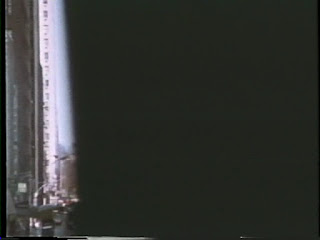aPpraise: Gordon Matta Clark & Chantal Akerman films, Cafe Curio
My wanderings around London town took me here to Cafe Curio at Camden Arts Centre, the magnet being Matta-Clarks work. Though it was a dark, rainy evening when I set foot here, it added to the ambience of the place which was in a previous life an old library with victorian gothic external features which still stand today. The internals are slightly more contemporary but well-designed. The entrance holds a bookshop which I steered clear of and leads into an exhibition space and a cafe. (Another cafe and bookshop to add your list readers!)
For the evening, the Cafe curio became a cinema, a projection onto the wall showing two films: City Slivers (76) by Gordon Matta Clark and News from Home (76) by Chantal Akerman. I have written briefly about Gordon Matta Clark before and will continue to do so forever more as I have a tiny obsession with him and his work and I would so loved to have invited him to a dinner party...apparently his parties lasted for 3 days!
The film short that was shown, can actually be viewed online here along with his other film works. His innovative methods of using film including splicing can be seen in this short which films parts of NY city. Rather like the modern 'split screen' method, where there are two screens side by side, Matta-Clark splits the frame itself into a few sections, like he's collaging with film. What I loved the most, is towards the end, he places a horizontal scene at a vertical slant, moving one whilst keeping the other still. With his work as a whole. although one can appreciate each individual work, film or otherwise, I feel that knowing his ideology and breadth of work as an ana-architect, is useful as there are concurrent themes and contexts particularly as Matta Clark lived art as life.
 ' ' |
| Frame from "City Slivers" |
Akerman's work is a longer film of about 90m and is both an arresting and experiential piece. The film focuses on different scenes of NYcity whilst Akerman reads out letters from her mother in Belgium to her intermittently during the film. In a way, you are waiting to hear Akerman's responses in between the letters but they never come. Perhaps we as as the viewer fill in the gaps or that even the film is supposed to fill in the gaps. Elements of presence and absence play a role as well as intertwining roles of speaker and auditor between Akermann and her mother. The film though a bit long and for me at times a little repetitive, is well worth a watch - as opposed to the idea of a traditional film with actors and scripts, it is more like a series of photographs with invisible actors and partial dialogue.
An in depth analysis of the film can be found here.
 |
| Scene from "News from Nowhere" |
